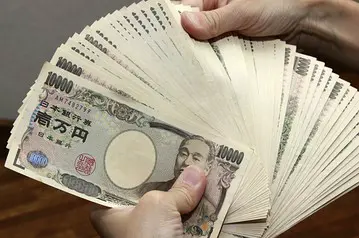Japan will print an additional 180 million 10,000-yen ($90) banknotes in fiscal 2016 from a year earlier to meet the rising demand as an increasing number of Japanese households are tucking the bills away at home.
According to the Finance Ministry’s plan, the Bank of Japan will print 1.23 billon 10,000-yen banknotes, worth 12.3 trillion yen, during fiscal 2016 through March 2017, a 17 percent increase from fiscal 2015.
Demand for 10,000-yen notes, the largest bill, has been steadily rising while that for smaller denominations is shrinking. The ministry’s plan calls for reducing the number of new banknotes for 1,000-yen and 5,000-yen bills.
The annual number of 10,000-yen banknotes printed by the BOJ was kept at 1.05 billion for five years through fiscal 2015.
According statistics compiled by the central bank, the total volume of cash in circulation in Japan reached 90.3 trillion yen in February, up 6.7 percent from a year earlier, the largest year-on-year increase since 2003.
Among the 1,000-yen, 5,000-yen and 10,000-yen banknotes in circulation, the number of 10,000-yen bills showed the largest year-on-year increase at 6.9 percent, while 5,000-yen notes edged up by 0.2 percent and 1,000-yen bills by 1.9 percent
The increasing demand for 10,000-yen bills, despite the widespread use of credit cards and other forms of electronic payment, is attributed to the trend of Japanese households tucking away assets at home instead of investing them or keeping them in banks.
Statistics show that the total amount of cash in circulation jumped around October when people started receiving their personal identification numbers under the "My Number" national identification system. Economists point out that an increasing number of households are stashing away cash at home to avoid tax authorities tracking their assets.
Households are also apparently keeping cash from banks in response to the BOJ's negative interest rates that came into effect in February. The brisk sales in recent months of home safes is a sign of such household efforts to safeguard their assets, economists said.
Hideo Kumano, chief economist at the Dai-Ichi Life Research Institute, estimates that the total volume of cash being saved by Japanese households at home is about 40 trillion yen.
“They save money in dead storage after giving up on investment management,” Kumano said.
(THE ASAHI SHIMBUN)
 简体中文
简体中文





